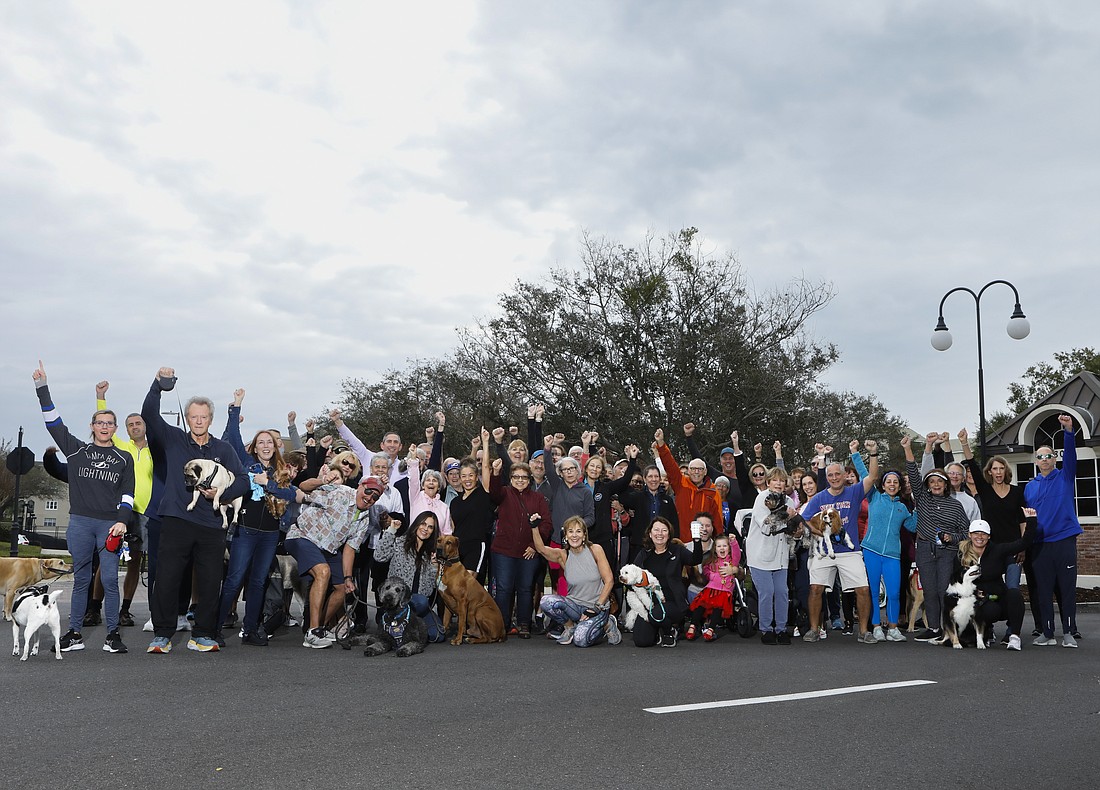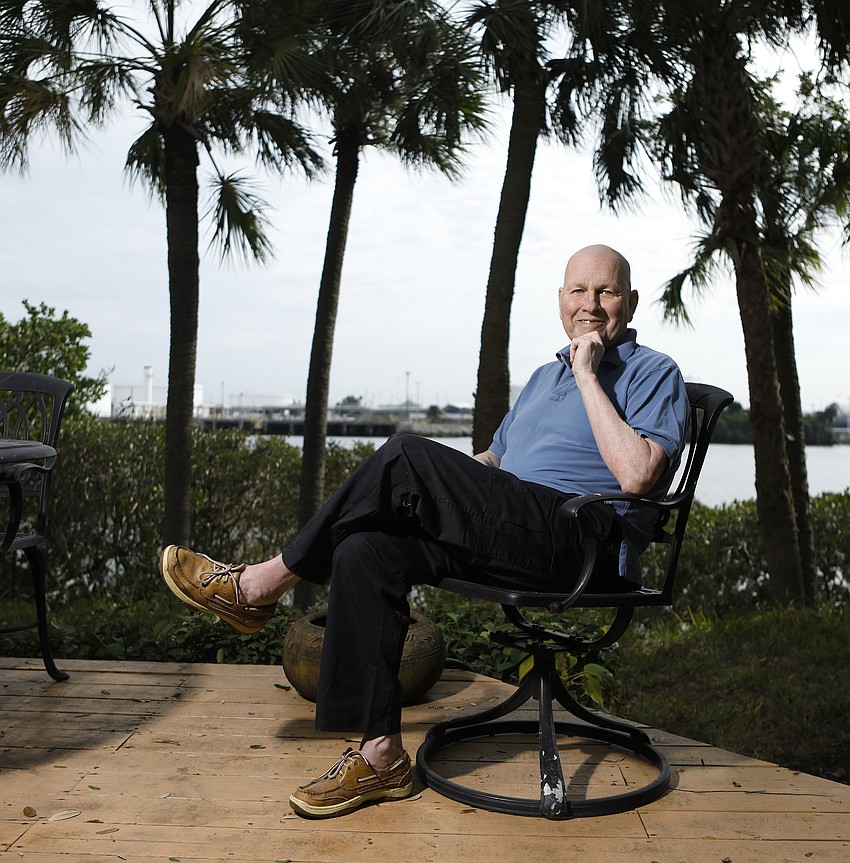- January 8, 2025
-
-
Loading

Loading

When Larry Premak first learned that a developer was planning to build a hotel on a piece of property he believed impinged on the Harbour Island neighborhood he’d called home for years, he got to work.
The former maritime executive and president of Harbour Island’s South Neighborhood Association began to sound the alarm, rallying neighbors and talking to decision makers in city government. He talked to reporters, made sure the cry went out on social media and created a game plan.
The planned hotel, which was to be built at the entrance to residential portion of the island neighborhood in downtown Tampa, had to be stopped.
And, after two public city council hearings crowded by residents, permission to build the hotel was, at least for now, denied.
“You know,” says Premak, “unfortunately, too many times when there’s objections to a developer, it comes across as NIMBY— not in my backyard. That’s not the case at all. And, you know, there’s room for that piece to be developed, but developed the right way.”
Premak’s beliefs and actions are not unlike those of thousands of residents each year who challenge developers’ plans for reasons that range from neighborhood integrity to draining school resources. Developers fight back equally as hard, citing property rights and arguing their projects will help the communities far beyond the people who live nearby by creating jobs and putting money in local government coffers.

Left to pick a side are the elected officials who sit on a dais.
The seemingly endless fights, though, are an integral part of the planning process and the creation of public policy. While those in living rooms packed with protest materials or developers in board rooms may not like the results, the disagreements often, though not always, lead to compromise, with residents acquiescing and developers making adjustments.
But that doesn’t mean the process is easy.
At its core, the main issue when neighbors and developers fight one another is the protection of rights. Neighbors want to protect their property values and neighborhoods; developers want to use the property they own as they fit.
“It’s absolutely a balancing act. It’s a quest to find compatibility and respect for property rights all in one exercise,” says Lee County Commission Chairman Brian Hamman.

Hamman says that as a commissioner there is empathy for a neighbor’s plight when it’s time to cast a vote, but sentiment can’t interfere with the law. Decisions on a project have to be made on strictly legal grounds and going against state and federal laws opens the county to costly lawsuits where the developer often wins anyway.
That’s because if a government body regulates a property too heavily, or damages the investment that led to the purchase, it becomes of little use to the owner. When that happens then the government is in essence “taking their property without actually taking their property,” says Hamman.
But the reality is, there is more to be considered than just the rules and regulations. New developments, whether they be residential, retail, commercial or industrial, have responsibilities that come with them.
By its very nature, growth means more people on streets, more need for emergency services and an increased need for non-emergency services. If a project brings residences, there is also a need to look at school capacities, utilities and other infrastructure needs.
This means when a developer’s plan is rejected, it’s not simply because a neighbor was opposed, says Darla Bonk, who represents District 6 on Fort Myers’s City Council.

“It’s not so much about being against development, in theory, because everybody wants a slice of paradise, right?” she says. “So, they’re really about, do you impact the growth in a smart and tangible way that doesn’t decrease the services that residents who have been here previously, have been accustomed to having?”
But even with that in mind, the impact of growth often depends on to whom you speak . A person who moved to Fort Myers from Boston in 2022 doesn’t see congestion the same way as a person who moved to the city after retiring in 2020.
Regardless of perspective, as a city like Fort Myers grows population, it requires more housing, more places to shop and more infrastructure.
Bonk sees her duty as one of balancing the needs of all residents and that means respecting the property rights of developers and making their needs fit “in a cohesive and tangible way” with existing neighborhoods or surrounding areas.
“And that’s where it becomes far more of an art than a science.”
But the fights between neighbors and developers aren’t always about infrastructure. Often, they are simply about change.
This is what’s happening in downtown Sarasota, where new developments in the commercial district are expected to bring hundreds of apartments as well as office and retail space in the next few years.
For many who have lived in and around the district for years, this change is not wholly welcome and there are fears that character and history is being sacrificed in the name of progress. Proponents, however, say the change will open the downtown area, bringing in younger professionals who will work in the city and not leave when the sun falls. This, they say, will bring a new energy to the neighborhood.
Ian Black, founder and partner of the commercial real estate firm Ian Black Real Estate on School Avenue near downtown, has lived in Sarasota for the past 40 years. His wife’s family has lived in the city since the 1920s.

He approaches the subject of the changes coming to the district from a distinct perch, both working in the industry on projects that will impact the area and from living in a downtown condominium for the past several years.
He believes both the new and the old can co-exist.
Black remembers the days when you would not go downtown after 6 p.m. because there was nothing to do and when his wife was reluctant to move to the area as recently as five or six years ago because of that.
He blames much of the backlash over growth on people new to the city, people who have bought into an idea of Sarasota and that don’t want to see the changes.
This attitude Black, and other say, stifles growth and opportunity which will help keep younger people in town rather than seeing them leave for other cities as has happened historically in Sarasota.
“What irks me is that people who come in here, and there’s a cadre of them in my building, and you can quote me on this, for whatever reason want to stop anything that makes any semblance of energy and vitality and vibrancy and noise. They are against that,” he says.
“The reason why you live (downtown) is because you want that vibrancy, and elements of noise going on. But they have been in Sarasota for 10 minutes and they are hell bent on changing things and stopping things. And it’s exhausting. It’s tiring.”
This conflict is by no means unique to Sarasota.
Fights over apartment developments are some of the fiercest and most complicated to come before local commissions and city councils across the country.
The argument, spoken or unspoken, usually is that apartment buildings — and the renters they bring — will alter a neighborhood in ways that, if you read the comments on social media, are terrifying. Often that opposition is shaded in code.
Despite the widespread belief that developers have the advantage in zoning disputes, the reality is that homeowners have long had the upper hand thanks in part to a 1926 Supreme Court decision in the city of Euclid, Ohio vs. Ambler Realty Co. That decision upheld a city’s rights to use its police powers to regulate where development can occur.
The case pitted the Ohio locality against a company wanting to build an apartment house. In the majority ruling, Justice George Sutherland wrote that “very often the apartment house is a mere parasite, constructed in order to take advantage of the open spaces and attractive surroundings created by the residential character of the district.”
Almost 100 years later, that arguments echoes ones today in that neighbors say they worry apartments will bring harm to their neighborhoods and lower property values, says Jessica Trounstine, a political science professor at University of California, Merced.
In a paper looking at the opposition to high density development, Trounstine writes that even today communities across the country seem to agree with Sutherland’s view, with most U.S. cities banning multifamily developments in some neighborhoods. This despite a growing demand as housing costs continue to climb.
In a survey for her paper, she found that people view apartments as decreasing property values, increasing crime rates, lowering school quality, increasing traffic and decreasing desirability.
Those findings aren’t a surprise to anyone who’s followed cases where neighbors oppose apartments being built in their communities. In fact, those are factor often cited in decisions to reject development plans.
Trounstine says in an interview with the Business Observer that early on land use restrictions were motivated by racism and the desire to keep a certain type of person from certain neighborhoods. But as explicit racial zoning became unconstitutional, “cities had to find a different way to regulate land uses that would produce the same effect.”
“And the argument that I have made,” she says in the interview, “is that density zoning or, you know, low density zoning, has been the substitute that most of these adopted in order to preserve racial homogeneity in particular neighborhoods.”
While differences between developers and neighbors are not likely to end any time soon, there is a consensus that communication early in the development process can make a difference and avoid a fight.
Premak says other projects that have affected his Tampa neighborhood have been approved by the city with nary a dissent. That includes Water Street Tampa, the $3 billion, 56-acre mixed-use development just south of downtown Tampa.
Developers behind that project met with neighbors early on, sharing their plans and getting feedback. Other developers in Harbour Island, and up and down the Gulf Coast, have done it as well.
But meeting is not enough, says Bonk. For the development process to work at its best, for a compromise to be reached before a government body forces a decision on a party, there needs to be a conversation. Neighbors need to understand what the developers want to accomplish, and developers need to understand and address the concerns of neighbors.
Not everyone will be happy, but then again, who is happy after a long, protracted fight that carries on for years and costs tens of thousands to litigate?
“I think it’s about being willing to listen, and it’s about being willing to ask questions, and it’s about being willing to not just meet to say you met, and not to just have a discussion to say you’ve had a discussion,” says Bonk.
“I think if we would be more eager to understand first, before we seek to be understood, I think we’d get a lot further.”